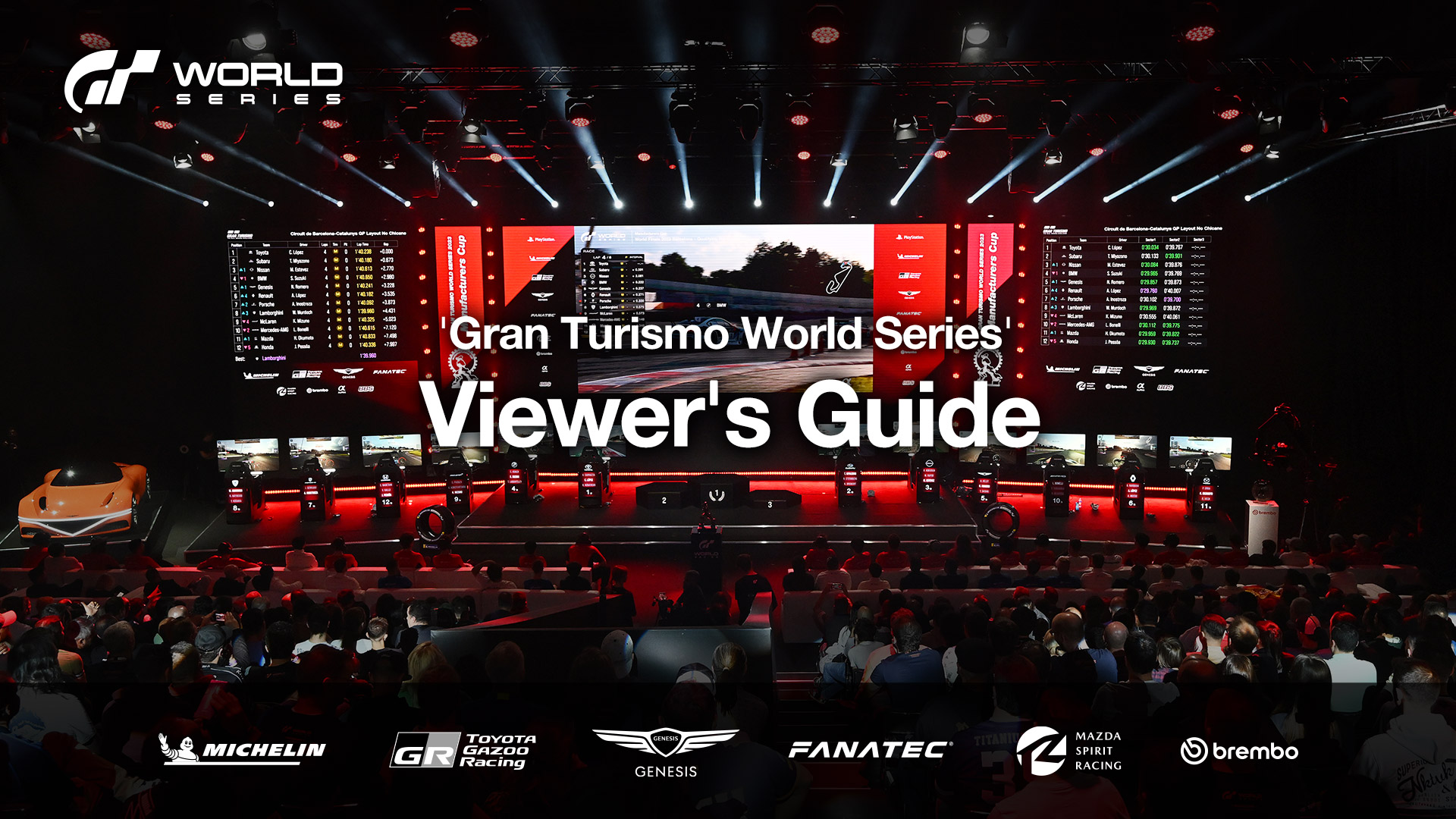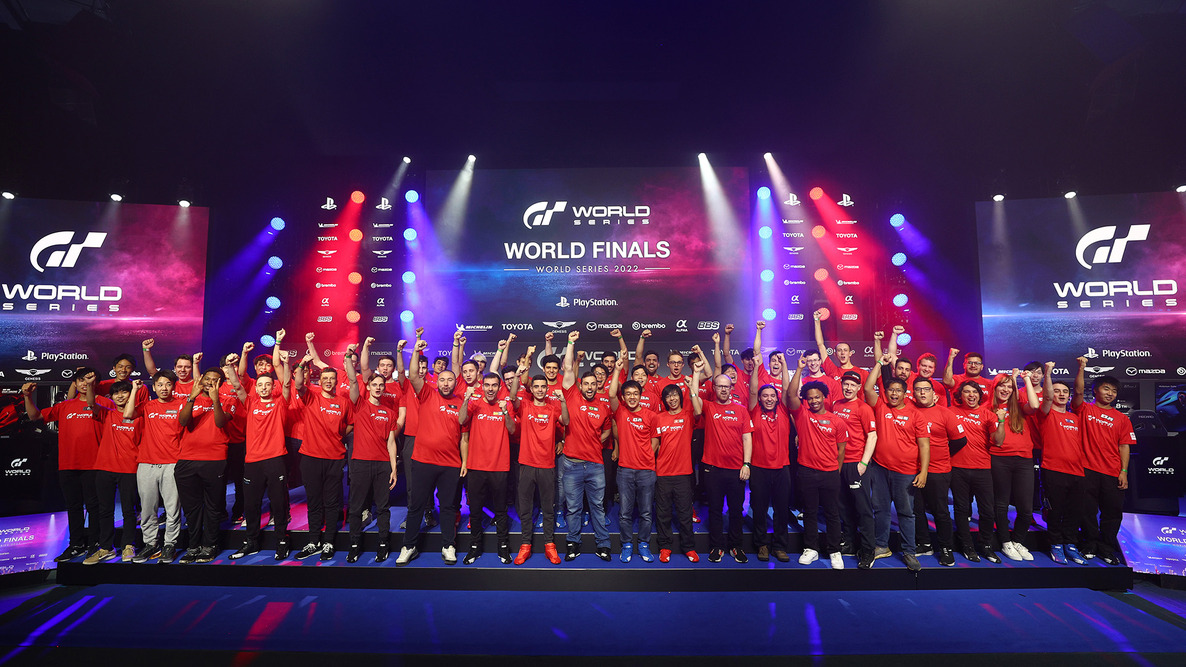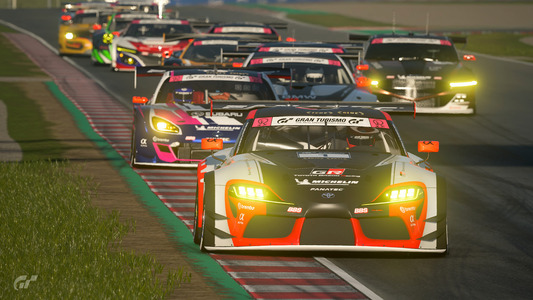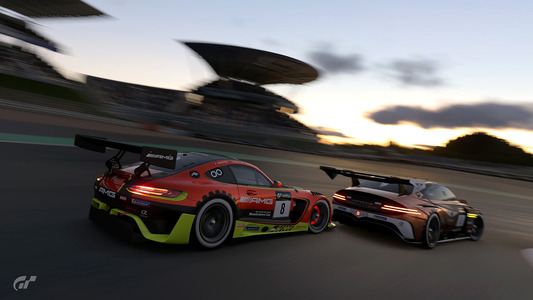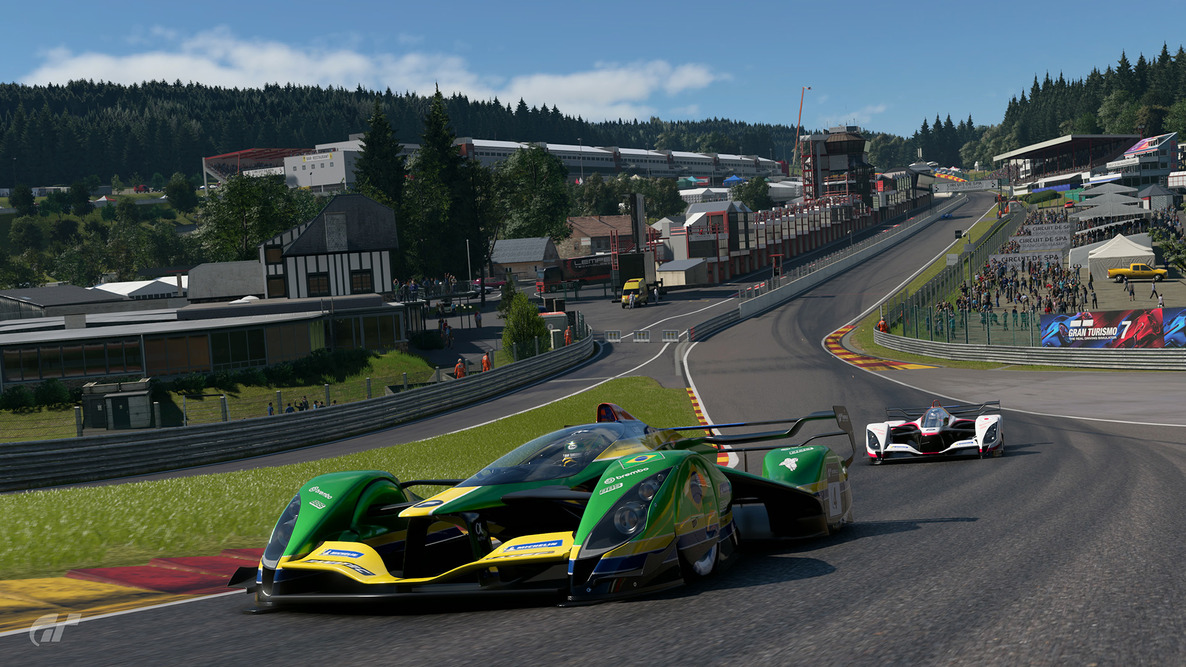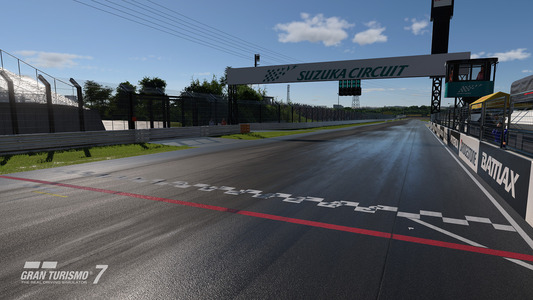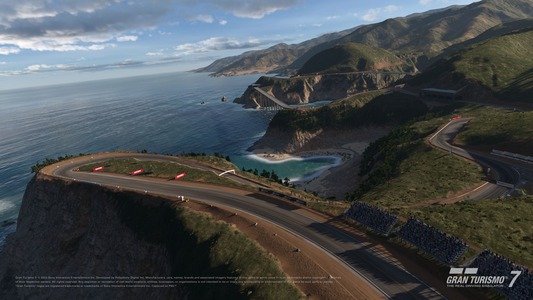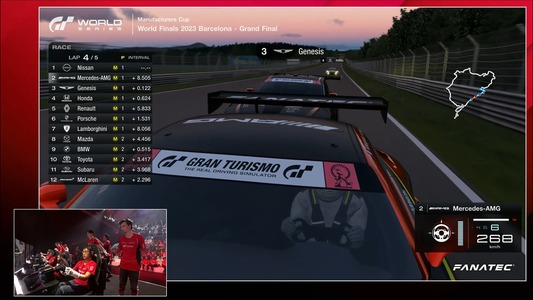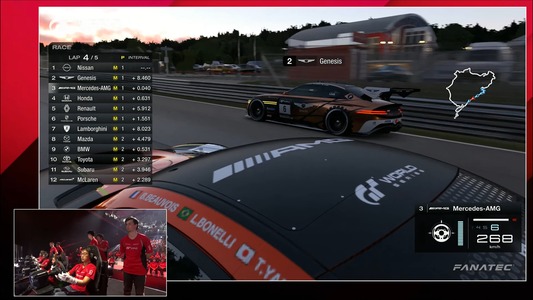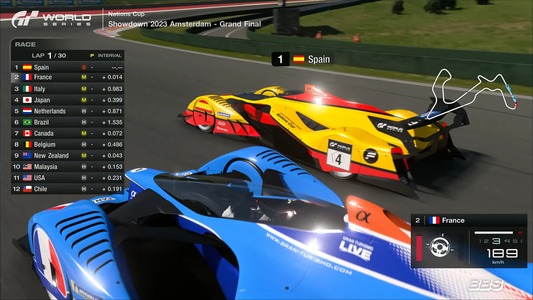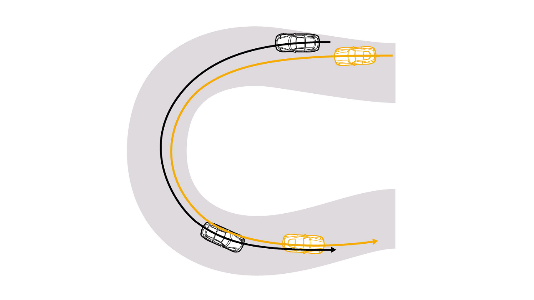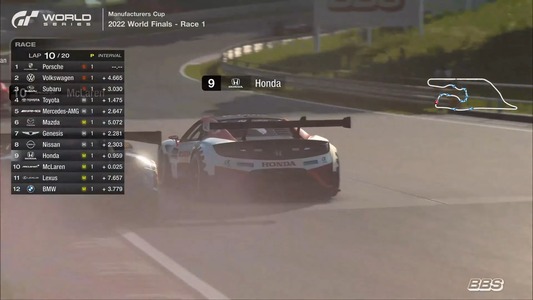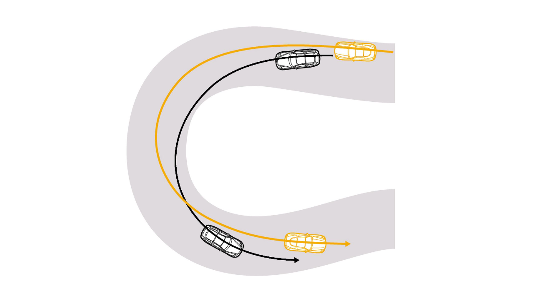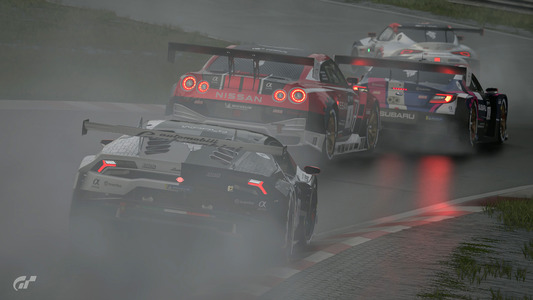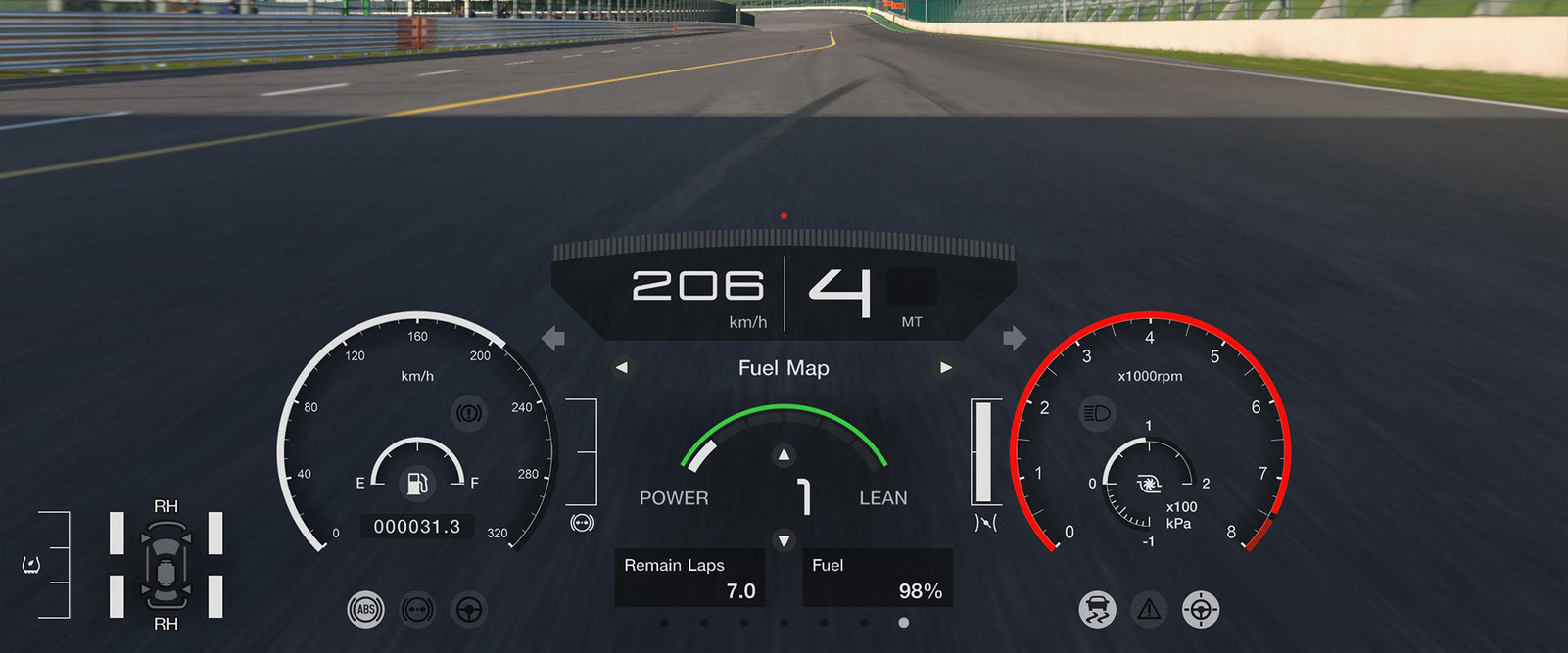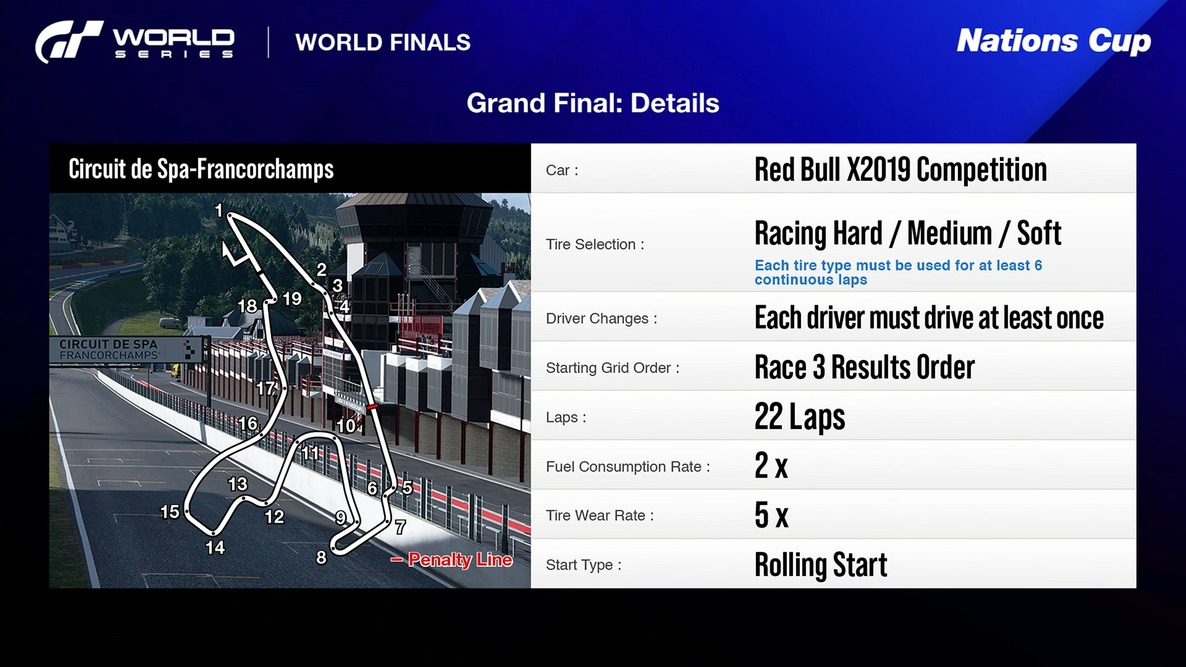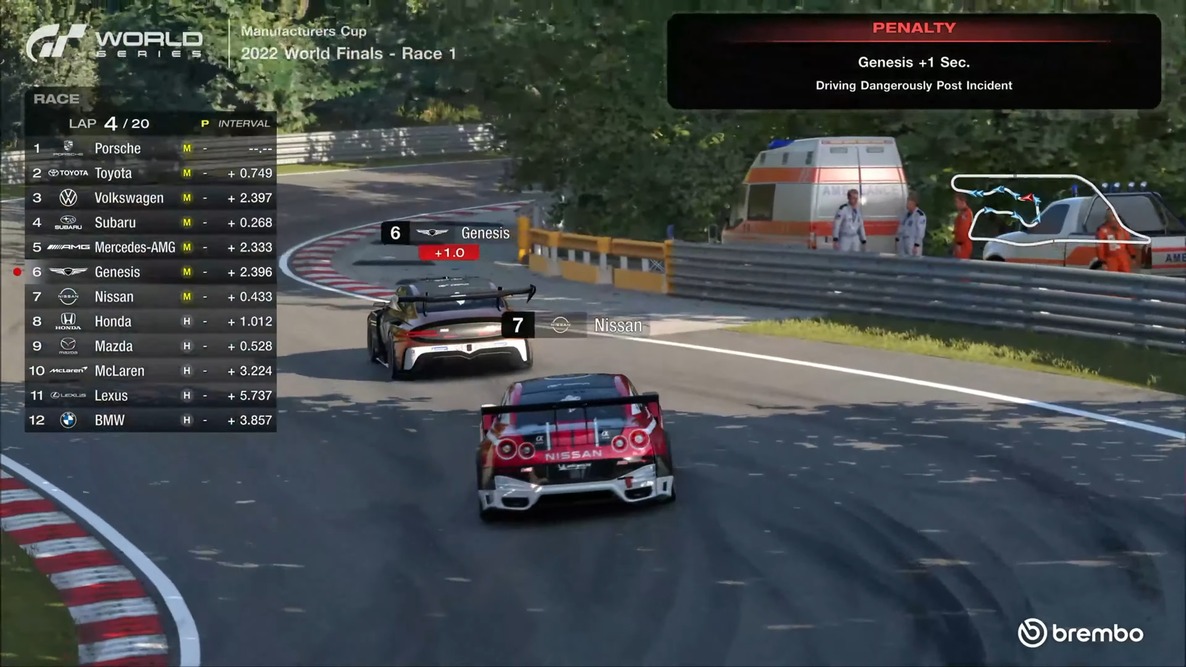'Gran Turismo World Series' Viewer's Guide
The pinnacle of several million players
The 'Gran Turismo World Series' is a global championship to determine the very best Gran Turismo players. The best drivers from around the world will gather to answer the question, "Who is the fastest and who has the endurance to become the champion?"
In 2025, the GTWS is entering its 8th year since its inception.
This year, the Online Qualifiers were hosted worldwide between 2 April and 10 May. Just a handful of top competitors who remained at the top of the rankings will compete in person at four live events staged in locations around the world.
Out of millions of Gran Turismo players from all around the world, the title of 'champion' will be awarded to only one. The competing drivers will go through a series of gruelling battles against the very best to seize this coveted title.
Connecting the history of automobile racing started in Paris in 1894 to the next 100 years: what the 'Gran Turismo World Series,' the future motorsport, is about.
https://www.gran-turismo.com/world/gt7/championships/2025/
Two championships
Manufacturers Cup
The battle of automotive manufacturers. The balance of power changes in 2025!?
The ‘Manufacturers Cup’ is a face-off between the world's automobile manufacturers. From the 27 brands in the GTWS, 12 manufacturers (including official partners Toyota and Mazda) will compete in the live events. As with last year, Round 1 to 3 are individual races by competitors who placed first in the Online Qualifiers of the relevant Region, while the World Finals will see drivers from all 3 Regions unite as a team.
In 2025, half of the 12 teams that have advanced to the live events have brand new drivers, appearing for the first time in the series. The power balance between the teams have changed greatly, making this a difficult season to speculate the outcome.
Nations Cup
12 of the world's best compete for national pride
The Nations Cup is a battle between representatives of countries or territories around the world. In addition to the nine competitors from the Regions hosting Online Qualifiers (four from Europe/Middle East/Africa, one from North America, two from Central & South America, one from Asia, and one from Oceania) the top three finishers from last year (Takuma Miyazono from Japan, Kylian Drumont from France, and Jose Serrano from Spain) will make seeded entries in the live events, for a total of 12 drivers.
In the mix with incredible competitors like the defending champion Miyazono and a grid of drivers who all have a shot at the title, Samuel Cardinal (Canada) is the sole newcomer in this Series. Will the rookie that came out of nowhere become the eye of the storm? All eyes are on him to find out!
Cars
At the GTWS, two types of cars will be used. Both meet the rules of Gran Turismo 7.
Gr.3 Cars (Group 3 Cars)
Cars in this category consist of race cars based on regular road cars, and this is the category that will be used in the final race of the Manufacturers Cup. These cars use a rear-wheel-drive (RWD) drivetrain and are designed to weigh between 1200 kg and 1300 kg with between 500 and 600 horsepower, making them surprisingly powerful and lightweight compared to regular road cars. They are also equipped with various aero parts such as large rear wings that provide powerful downforce (the force that pushes the car into the track surface) making them far more agile than road cars.
X2019 Competition
The X2019 Competition used in the Grand Final of the Nations Cup is a single-seater, futuristic race car that was born from a fan car project between Red Bull Racing and Gran Turismo. A rear-wheel-drive high-performance car that weighs just 650 kg with over 800 HP, the X2019 is an absolute monster of a machine which requires talented drivers to tame it.
Tracks
The tracks serving as the stage for these races will be made up of two types. There are real-world circuits such as ‘Suzuka’ and ‘Spa-Francorchamps,’ very familiar to fans of motorsport.
Then there are the ‘Gran Turismo 7’ original tracks. These are completely original circuits from fictitious locations that include multiple layouts. The main difference to real-world circuits is that the width of the track has been expanded in the original tracks, allowing for more head-to-head battles in races.
Race tactics: things to look out for
Winning isn't just about being the fastest. It's also about strategy and selecting the right time during the race to overtake your rival. In this section, we look at different overtakes and the techniques that you might see employed by drivers during a race.
Overtaking on the track
Slipstream overtakes
One of the most thrilling aspects of car racing and the most popular method of overtaking, 'slipstreaming' involves getting close to the car in front to benefit from a reduction in air drag and gain speed. It is also known as 'towing' or 'drafting.' Keep an eye out for it, especially on long straights where it is often used.
Braking battle overtake
This is a highly difficult overtaking manoeuvre and a display of a driver’s true skills. This technique involves braking later so that you go into the corner ahead of your rival. This technique is very effective on corners that require hard braking from high speeds, so it makes for an exciting move. As the car will fail to decelerate enough in time if the braking timing is even slightly wrong, the driver needs immense courage and good braking technique to pull this move off.
Overtaking at the corner exit
This manoeuvre involves taking a driving line to increase the exit speed out of the corner to overtake. The driver switches lines and attempts to be at full throttle as early as possible to bring the car out ahead of the rival car. This technique is most effective on corners which have a long straight at the exit and is also known as ‘cross-lining’ because the driving lines of the rival car and your car cross over.
Overtaking through pit stop strategies
Overtaking rivals through pit stop strategies is a key tactic used in long races. Drivers must give careful consideration to the most optimal pit stop timing to ensure they will return to the track in front of their rivals. Drivers must compare and consider the race pace and gap between themselves and their rivals, sometimes pushing ahead, sometimes looking to maintain tyres and balance fuel consumption and power appropriately, to ensure they make any pit stops at the optimal time.
In a real race, this is a decision that would be made by the race team, but in the GTWS it’s a judgment call that the drivers must make themselves.
Also, the pit stop strategy used can vary from driver to driver.
In the early stages of a race, a driver may choose to save tyres by driving carefully and delaying any stops until the latter stages of the race, then use their softer tyres to catch up quickly and ignite the crowd for an electrifying finish. Conversely, some drivers may look to increase the pace from the beginning to create a gap so that they have plenty of time to pit in and then skilfully block their rivals in the latter stages of the race to win. Pit stop strategies and race moments like these have captivated audiences in numerous races in past GTWS competitions.
Who and at what stage a pit stop is made can decide a race, so be sure to keep an eye out during the race for these strategies.
Control your tyres, control the race
At the GTWS, racing cars can use five different tyre compounds. Three of these tyres are used in dry weather (Soft, Medium, and Hard), while the other two are for wet conditions (Intermediate, and Heavy Wet). Soft tyres have the most grip out of the dry tyres (followed by Medium and then Hard) so they are the fastest, but the softer the tyre the quicker it will degrade, which also means a drop in its performance.
Dry Tyres
Soft (S): Fast but degrade quickly
Medium (M): Good balance of speed and durability
Hard (H): Durable but slow
That being said, the rate at which tyres degrade is not the same for everyone. Tyre tread wear will differ depending on the characteristics of the car or the driving style used by the driver. Drivers who drive smoothly and avoid placing unnecessary stress on their tyres will experience less tyre wear and as a result, their tyres will last longer. It’s not uncommon for tyre usage to have an impact on the outcome of a race, especially during the latter stage, so keep an eye out for which tyres a driver chooses.
Wet Tyres
Intermediate (IM): Used in light rain
Heavy Wet (W): Used in heavy rain
Fuel efficiency or power?
In long races, one thing a driver must consider as much, or even more than tyre management is fuel management.
Gran Turismo 7 features a function known as 'Fuel Map.' With the Fuel Map drivers can adjust the concentration of fuel going to the engine during a race through six different power settings. Setting this meter to 'Power Level 1' will give the most power, whereas adjusting the number towards 'Lean' (higher numbers) will reduce engine output in exchange for improved fuel consumption.
Drivers can also employ real-life driving techniques to improve fuel efficiency such as short shifting to avoid raising the engine RPM too much, lifting off the throttle to let the car coast under its momentum, and slipstreaming to use the car in front to reduce air resistance. Especially in races with long straights, drivers face the difficult choice of going for all-out power or being strategic and saving vital fuel. Keep an eye out and see if you can spot these strategies in play during a race.
Faster than real races? Tyre wear & fuel consumption rates
A unique element of the GTWS is tyre wear and fuel consumption rates. These signify the speed at which tyres will degrade and fuel will deplete in a race. For example, a race set to '5x' and '2x' would mean that tyres will wear five times faster and fuel will be consumed twice as fast as it would in real life.
In most cases, the wear/consumption rates are set to be faster than in real life, meaning that drivers must be highly skilled to cope with the continuously changing tyre conditions while also keeping a keen eye on their Fuel Map during a race.
Race penalty system
Though the GTWS is held in a virtual environment, the rules are very much real, and drivers must respect each other on the track. To maintain fairness and competitive racing, our global live events employ race stewards who carefully watch over the races and make judgements.
Infractions such as deliberately knocking an opponent off the track or persistently blocking another driver are considered unsportsmanlike conduct and will incur an instant penalty, while collision infractions are reviewed using replay footage and dealt with after careful consideration. Penalties are typically issued in the form of a time penalty and there is a section on the track in each race where the cars will automatically slow down to clear such a penalty. An icon will be displayed above the car that has incurred the penalty and it will turn invisible until the penalty is cleared to ensure passing drivers are not blocked or hindered. It’s this combination of people (race stewards) and virtual systems that make exciting next-level races possible, never seen in any real motorsport event.
